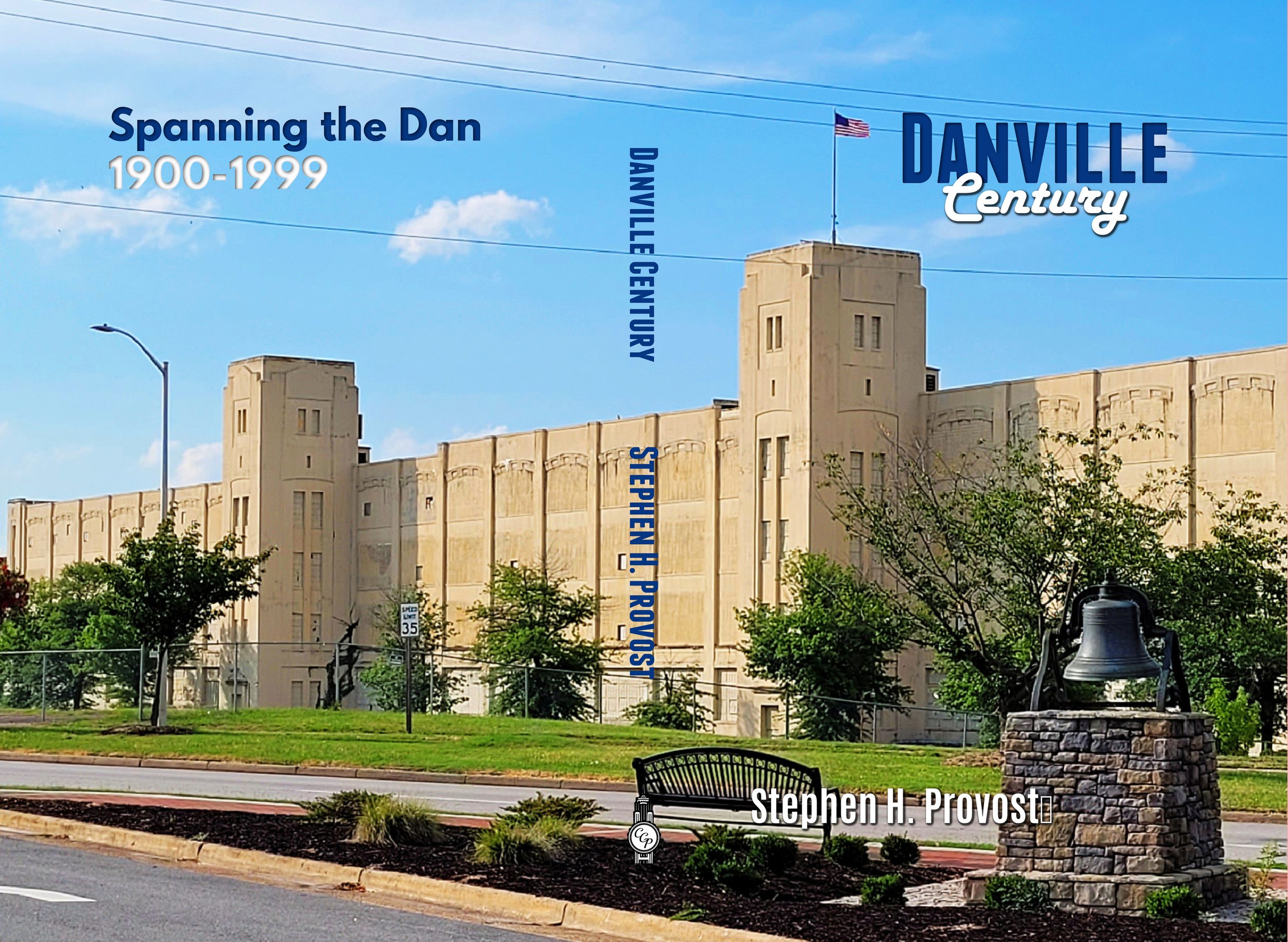Danville, Virginia, is a lot more than textiles and tobacco
Stephen H. Provost
There are several different Danvilles. In fact, there are 24 of them in America, mostly scattered across the East, Midwest, and South.
There’s one in my home state of California, and there’s one in my new home state of Virginia.
Since the books I’ve written so far in my Century Cities series have been in both those states, I should clear up any confusion: The latest in this series, just released, is about the Danville in Virginia. It’s actually my third book about a Virginia city, following up on Martinsville Memories, about the town where I live, and Roanoke Century, focusing on a city about an hour up the road.
Danville’s even closer, a little more than a half-hour to the east, and it shares a lot in common with Martinsville, although it’s about three times as large. Both were built on tobacco in the second half of the 19th century, and textiles in the 20th. The DuPont plant in Martinsville and Dan River Mills in Danville employed thousands and were, for a time, the dominant forces in their respective communities.
But Danville is unique in a number of ways, which is one reason I wanted to write about it.
In some quarters, it’s best known as the “last capital of the Confederacy,” after the fall of Richmond. The Confederate government met briefly in a mansion there that became a library... before the library eventually became a museum.
But the events of the 20th century — the focus of my book — are just as fascinating, if not more so.
Before I began my research, I had no idea that Danville had been the site of a train wreck that inspired America’s first million-selling record. Or that the record in question, “The Wreck of the Old 97,” became the basis for a song my parents often played in my home during childhood: “M.T.A.” by the Kingston Trio.
I also didn’t know that an American woman could serve in the British House of Commons. But I found out it had not only happened, but that a woman from Danville had been the first woman — from anywhere — to ever be seated in Parliament. There’s a street named after her, Lady Astor Street, in Danville today.
The first African American to sign a contract with a major U.S. opera company, Camilla Williams, was born in Danville, and so was the first Black driver to win a NASCAR Grand National race, Wendell Scott. The first Black player in the Carolina League wore a Danville Leafs uniform, and so did future Hall of Famer Willie McCovey, who came up through the Giants organization.
I made a number of trips to Danville, making new discoveries each time: like the brick building that used to be a drive-in restaurant on North Main, the Five Forks area that was once a thriving neighborhood retail hub, the North Theatre, or Mama Possum’s tucked in behind the Sherwood Shopping Center that used to be a Wimpy’s hamburger stand.
I even drove all the way to Burlington, North Carolina, where they carted off the bleachers from the baseball park that used to be in Danville more than 60 years ago.
I photographed old neighborhood markets, cinemas, fast-food joints, service stations, and the “arrow sign” that’s the only thing left at the site of the old South Drive-In.
I took pictures of the smokestacks at the partially demolished Schoolville textile plant and the ones down in the River District, site of the old tobacco plants. I took pictures along all three Main Streets (West Main, North Main, and South Main), and when all was said and done, I had nearly 150 modern and vintage images for the book.
Danville Century is the fifth in the series, released Aug. 17, 2021, and is available in paperback at Amazon. I hope you enjoy reading it as much as I loved writing it.

